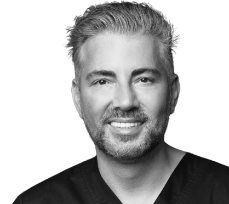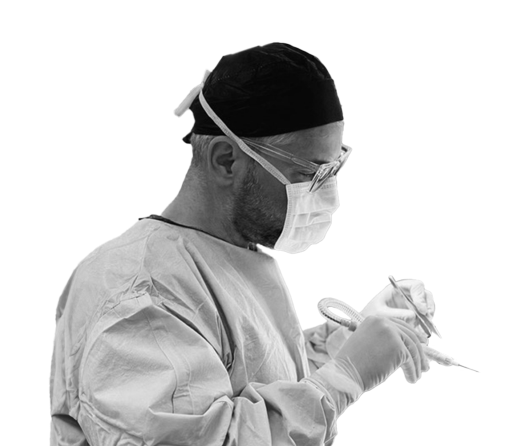Australia’s specialist plastic surgeon with experience in:
- Complicated Breast Revisions & Internal Bra System
- Tuberous Breasts & Asymmetry Corrections
- Comprehensive understanding in Fat Grafting Technique
SUITABLE CANDIDATES FOR ABDOMINOPLASTY
While many people may wish to undergo the procedure, unfortunately not everyone is a suitable candidate, and it is crucial that we only perform the surgery on suitable candidates to see the desired results and minimise risks.
Ultimately, your suitability for the procedure will be discussed during your initial consult. If, for some reason, you may not be considered to be a suitable candidate, we may recommend alternative procedures that can still help you to achieve results, although the results may not be as dramatic as a surgical procedure.
There are multiple factors to consider when determining your suitability for the procedure, but generally, suitable candidates will include:
– Patients who are near their ideal body weight with a good diet and regular exercise routines
– A Body Mass Index (BMI) of less than 30
– Men or women who have undergone significant weight loss
– Men or women with loose skin, stretch marks, excess fat and muscle laxity following multiple pregnancies (women) or otherwise massive weight loss.
THE COST OF ABDOMINOPLASTY IN SYDNEY OR DOUBLE BAY
Abdominoplasty costs vary, depending on the detail of surgery that will be required. You will need to consult with Dr Tavakoli’s office for a price guide prior to your consultation if you like, but ultimately your total costs will need to be determined during your initial consult.
Factors that can influence the costs of your procedure will include individually varying details, such as the length of the surgery and whether it is part of a comprehensive package that involves other procedures. Your procedure goals and body type can determine the details of these factors, so we can only evaluate your costs after discussing these factors and creating a personalised treatment plan.
Your procedure fees will encompass the cost of the surgical team, anaesthetist, our facilities, equipment, and comprehensive after-care and consultation. Your initial consultation and quote are free of charge and obligation.
Our after-care program is comprehensive, with thorough communication and assessment sessions to help ensure a complete recovery.
PROCEDURE RECOVERY AND AFTERCARE
After the surgery, you can expect a recovery period of a few weeks to a few months, depending on the extent of the surgery and your individual healing process. Swelling and bruising are common after the procedure and should subside within the earlier weeks of your recovery. You will likely experience some pain and discomfort after the surgery, but this is normal and we may prescribe pain medication to help manage this.
You will need to wear compression garments to help reduce swelling and assist with the contouring of the area, which your surgeon will advise you on how often to wear and when you can stop wearing. You may have drainage tubes in the incision site to help remove excess fluid from the area, which will be removed during a post-operative consult.
As you heal, you will begin to see the results of the surgery. When it comes to your results, it’s important to be patient, as although you will be able to see improvements early on, your full results can take about six to 12 months to show.
What are my limitations in activity postoperatively? How long is my recovery?
After abdominoplasty surgery, the bed will be positioned so that you are bent at the hips (waist) to keep tension off the newly tightened skin. You will have a pain pump for a day or two.
Within 24 hours, you will be walking in a bent-over position. Although strenuous activity and lifting more than four kilograms must be avoided for six weeks, some people can return to work and daily activities as soon as two weeks after abdominoplasty surgery.
Driving is allowed after three weeks. Patients can commence gentle exercise after six weeks. Serious weight workout and strenuous activity is usually avoided for twelve weeks. Softening of the surgical scars, return of sensation, and loosening of the tight sensation may take six to 12 months.
RISKS AND COMPLICATIONS
Like any surgical procedure, Abdominoplasty involves certain risks and potential complications. These can include infection, bleeding, scarring, seroma, numbness or tingling, blood clots, anaesthesia risks, and skin necrosis. We will take precautions to minimise these risks, such as managing excessive bleeding, using advanced technology to minimise scarring, and providing aftercare instructions to promote healing. We may also prescribe some antibiotics to prevent infection.
Seroma can be drained if it occurs, and medications and mobility exercises can prevent blood clots. However, there is always a risk associated with general anaesthesia, including allergic reactions and breathing difficulties. In rare cases, skin necrosis may occur if the blood supply to the skin is interrupted during the procedure.
Dr Tavakoli values transparency and will thoroughly discuss the risks and complications that are associated with your procedure during your initial consultation, which is of course obligation-free.
All plastic surgery procedure carry risks. A full explanation of general plastic surgery risks can be found by clicking the link here.
FREQUENTLY ASKED QUESTIONS
In addition to changing the appearance of the abdomen, Abdominoplasty may also address functional concerns, such as relieving back pain and helping to address posture.
Yes, Abdominoplasty can be combined with other procedures such as liposuction or a breast augmentation mammoplasty.
Abdominoplasty is not a weight loss procedure, and it should not be used as a substitute for a healthy diet and regular exercise.
Abdominoplasty is a permanent procedure that cannot be reversed. Patients should carefully consider their decision to undergo surgery and have realistic expectations about the outcome.
It is recommended that patients have someone stay with them for the first 24 to 48 hours after surgery to assist with daily activities and provide support.
It is recommended that women wait until they are finished having children before undergoing a tummy tuck (abdominoplasty), as pregnancy can affect the results of the surgery. However, this is a highly personal decision, which should be discussed during your consult.
You will receive some preparation advice during your initial consult, but generally, you will need to avoid smoking and taking certain medications that can increase the risk of complications. Patients should follow their personalised preparation instructions carefully to minimise the chance of complications that can occur throughout the procedure and post-operative process.
Abdominoplasty (Tummy Tuck)
Dr Tavakoli has featured in several plastic surgery articles discussing abdominoplasty.
If you are looking for Abdominoplasty in Sydney or Double Bay, Dr Tavakoli is here to help through the process with pre-surgery consultation.
You can view abdominoplasty before and after photos of previous patients as guides.
If you want to know how much abdominoplasty costs in Sydney or Double Bay or for more information on Medicare or other health funds that may cover the surgery, please do not hesitate to ask Dr Tavakoli as your consultant and surgeon.
Any surgical or invasive procedure carries risks. Before proceeding, you should seek a second opinion from an appropriately qualified health practitioner.


